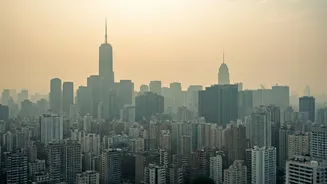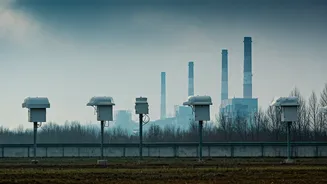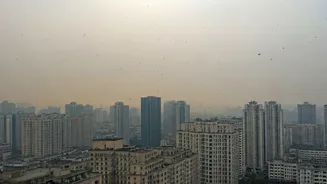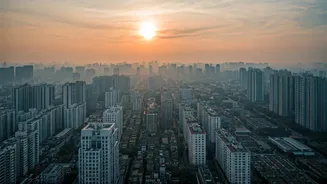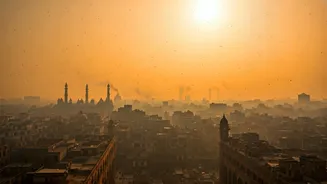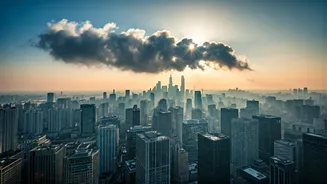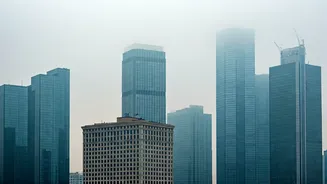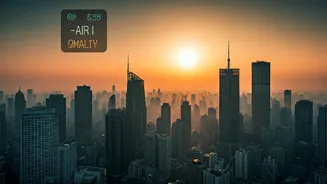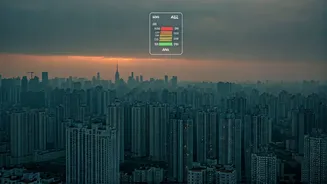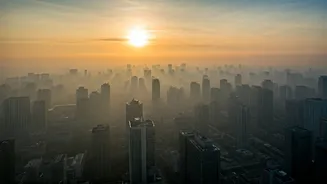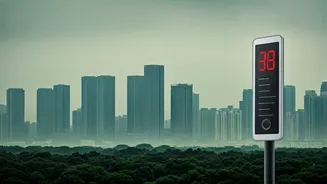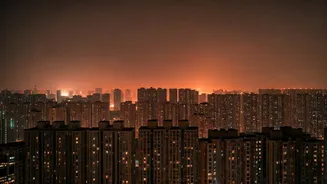Diwali's Aftermath
Post-Diwali, Delhi faced a grim situation marked by dense smog and severely degraded air quality. The widespread use of firecrackers during the festival
was a major factor, leading to a drastic spike in pollution levels. Images showed a city veiled in a thick haze, emphasizing the visible consequences of the pollution. The Air Quality Index (AQI) soared past 350, indicating 'very poor' air quality, posing significant health risks to the residents. This environmental challenge underscores the immediate and adverse impacts of celebratory practices on urban air quality.
Pollution's Immediate Impact
The immediate impact of the pollution was stark, with drastically reduced visibility across the Delhi-NCR region. The visibility was significantly affected, making it difficult for residents to navigate the city. The smog triggered a series of health concerns, including respiratory problems and exacerbating existing conditions. The 'very poor' air quality prompted health advisories and warnings from authorities, urging people, particularly the vulnerable, to take precautions. The situation highlighted the urgency of addressing air pollution and its tangible effects on the lives of Delhi residents, with an increased risk of health problems for everyone in the city.
Causes and Contributors
The primary contributor to the crisis was the extensive use of firecrackers during Diwali. The combustion of these fireworks released massive amounts of pollutants, including particulate matter, into the atmosphere. This, combined with vehicular emissions and industrial activity, intensified the smog. Meteorological conditions, such as temperature inversions and calm winds, further trapped pollutants close to the ground, preventing dispersion. The combined effect amplified the pollution, and led to the hazardous air quality levels observed after the festive celebrations. These combined factors created a dangerous cocktail of pollutants that put the citizens at risk.
Health and Precautions
Given the poor air quality, health advisories were widely distributed, advising residents to take precautionary measures. People, particularly children, the elderly, and those with pre-existing respiratory conditions, were advised to stay indoors as much as possible. Wearing masks was also recommended when venturing outside to minimize exposure to pollutants. The long-term health effects of prolonged exposure to such polluted air, including respiratory illnesses and cardiovascular diseases, were a significant concern. Public health officials emphasized the need for immediate actions to mitigate the adverse effects and reduce exposure.
Looking Ahead
Addressing Delhi's air pollution crisis requires a multi-pronged approach. Implementing stricter regulations on firecracker usage is essential. Promoting public awareness about the health risks associated with pollution is equally important. Investing in public transportation and improving traffic management to reduce vehicle emissions are crucial steps. Supporting the adoption of cleaner energy sources and encouraging sustainable practices can further contribute to long-term improvements in air quality. This calls for collective responsibility and proactive strategies to safeguard the environmental and health conditions for all residents.
